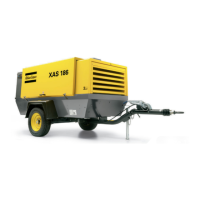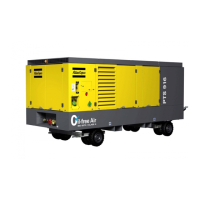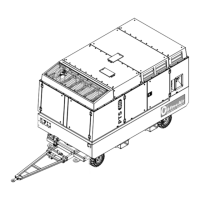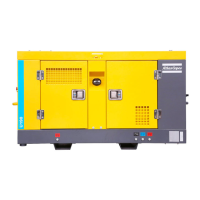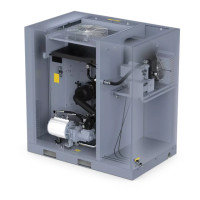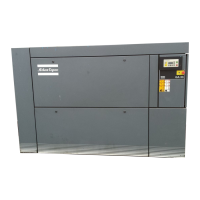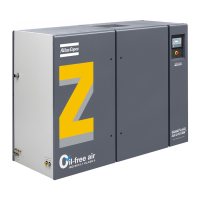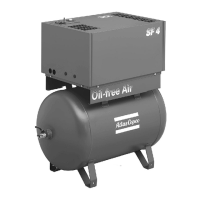- 65 -
– Rock the battery a few times so that possible air
bubbles can escape; wait 10 minutes and check the
level in each cell once more; if required, add
electrolyte.
– Refit plugs and/or cover.
– Place the battery in the compressor.
6.4.8.3 Recharging a battery
Before and after charging a battery, always check the
electrolyte level in each cell; if required, top up with
distilled water only. When charging batteries, each
cell must be open, i.e. plugs and/or cover removed.
Apply with preference the slow charging method and
adjust the charge current according to the following
rule of thumb: battery capacity in Ah divided by 20
gives safe charging current in Amp.
To keep a battery charged, use the unit’s battery
charger.
Do not use this battery charger to charge an empty
battery.
6.4.8.4 Maintaining the battery voltage
To maintain the battery voltage, use the unit’s
automatic battery charger.
– Battery charger EEC/AUS: 240 VAC / 24 VDC -
100 VA
– Battery charger USA: 120 VAC / 24 VDC -
100 VA
When power is supplied to the charger, the battery
voltage will be kept within preset limits.
Three LEDs on top of the battery charger show the
charging condition:
– Green: AC supply voltage present
– Yellow: Battery voltage high
– Red: DC voltage present / unit charging
6.4.8.5 Battery maintenance
– Keep the battery clean and dry.
– Keep the electrolyte level at 10 to 15 mm above
the plates or at the indicated level; top up with
distilled water only.
– Keep the terminals and clamps tight, clean, and
lightly covered with petroleum jelly.
Use a commercial automatic battery
charger according to its
manufacturer’s instructions.
Do not use the unit’s automatic
battery charger to charge an empty
battery. In this case use a
commercial automatic battery
charger (see section 6.4.8.3).

